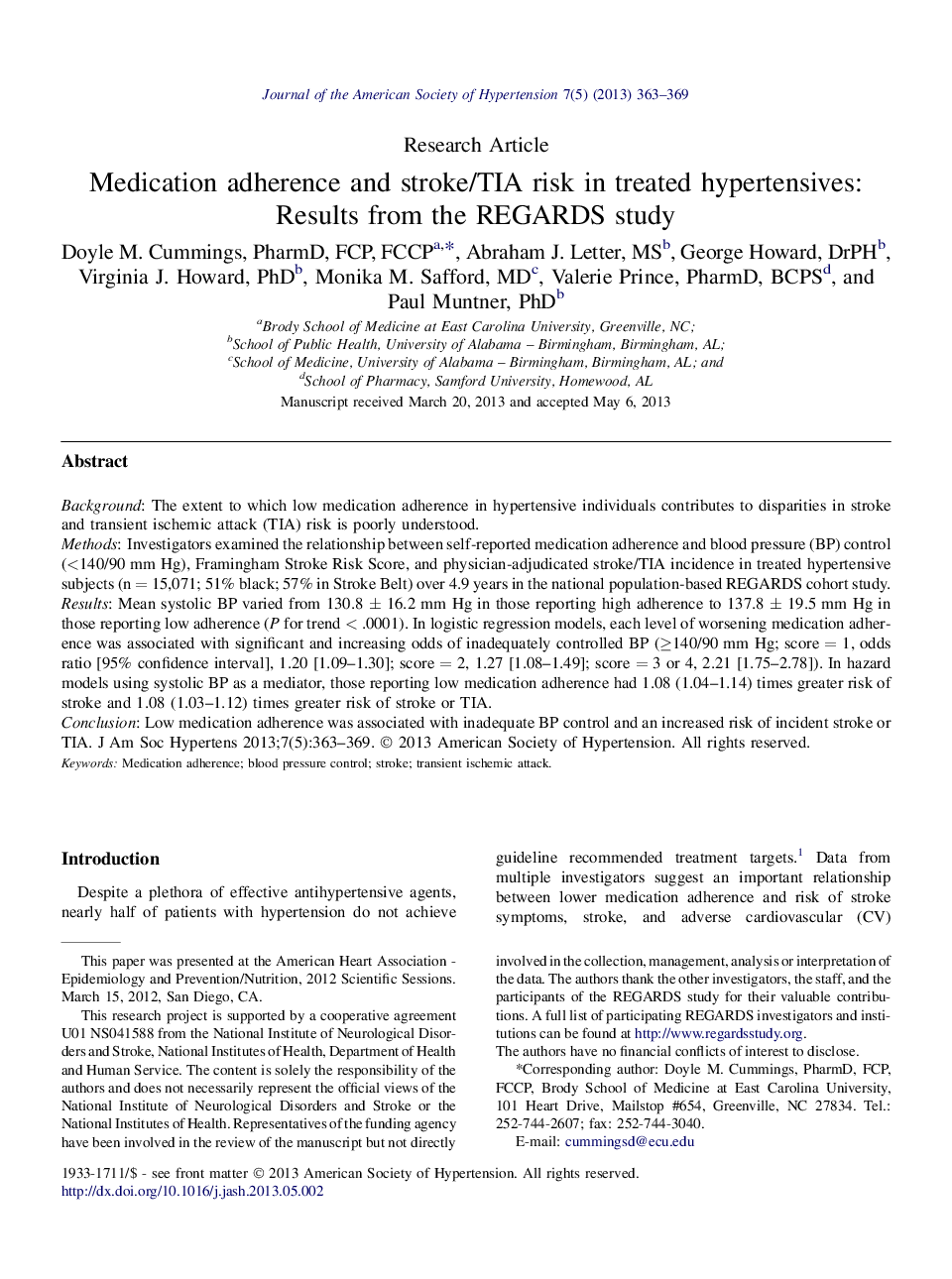| کد مقاله | کد نشریه | سال انتشار | مقاله انگلیسی | نسخه تمام متن |
|---|---|---|---|---|
| 2956859 | 1578059 | 2013 | 7 صفحه PDF | دانلود رایگان |

BackgroundThe extent to which low medication adherence in hypertensive individuals contributes to disparities in stroke and transient ischemic attack (TIA) risk is poorly understood.MethodsInvestigators examined the relationship between self-reported medication adherence and blood pressure (BP) control (<140/90 mm Hg), Framingham Stroke Risk Score, and physician-adjudicated stroke/TIA incidence in treated hypertensive subjects (n = 15,071; 51% black; 57% in Stroke Belt) over 4.9 years in the national population-based REGARDS cohort study.ResultsMean systolic BP varied from 130.8 ± 16.2 mm Hg in those reporting high adherence to 137.8 ± 19.5 mm Hg in those reporting low adherence (P for trend < .0001). In logistic regression models, each level of worsening medication adherence was associated with significant and increasing odds of inadequately controlled BP (≥140/90 mm Hg; score = 1, odds ratio [95% confidence interval], 1.20 [1.09–1.30]; score = 2, 1.27 [1.08–1.49]; score = 3 or 4, 2.21 [1.75–2.78]). In hazard models using systolic BP as a mediator, those reporting low medication adherence had 1.08 (1.04–1.14) times greater risk of stroke and 1.08 (1.03–1.12) times greater risk of stroke or TIA.ConclusionLow medication adherence was associated with inadequate BP control and an increased risk of incident stroke or TIA.
Journal: Journal of the American Society of Hypertension - Volume 7, Issue 5, September–October 2013, Pages 363–369